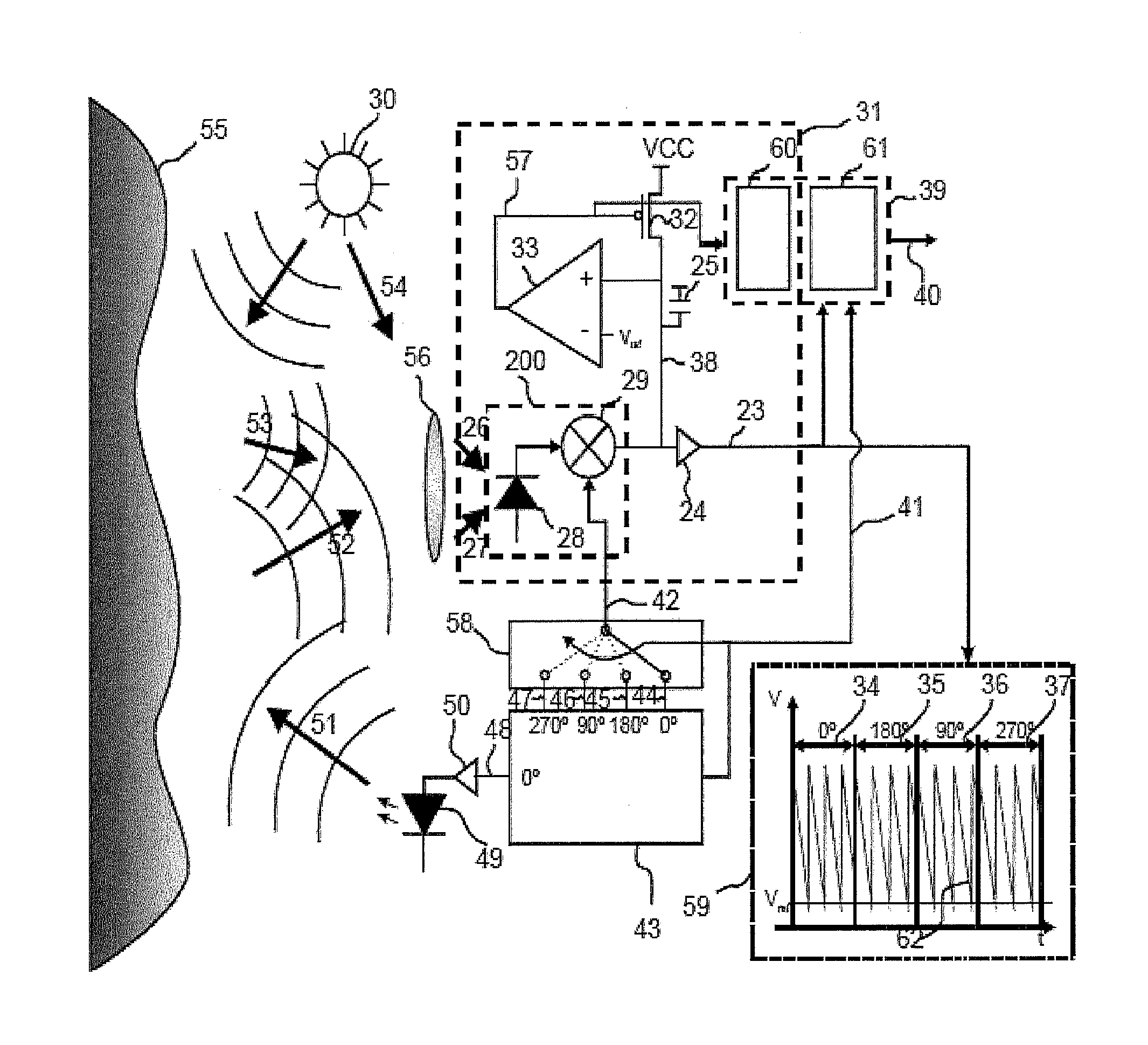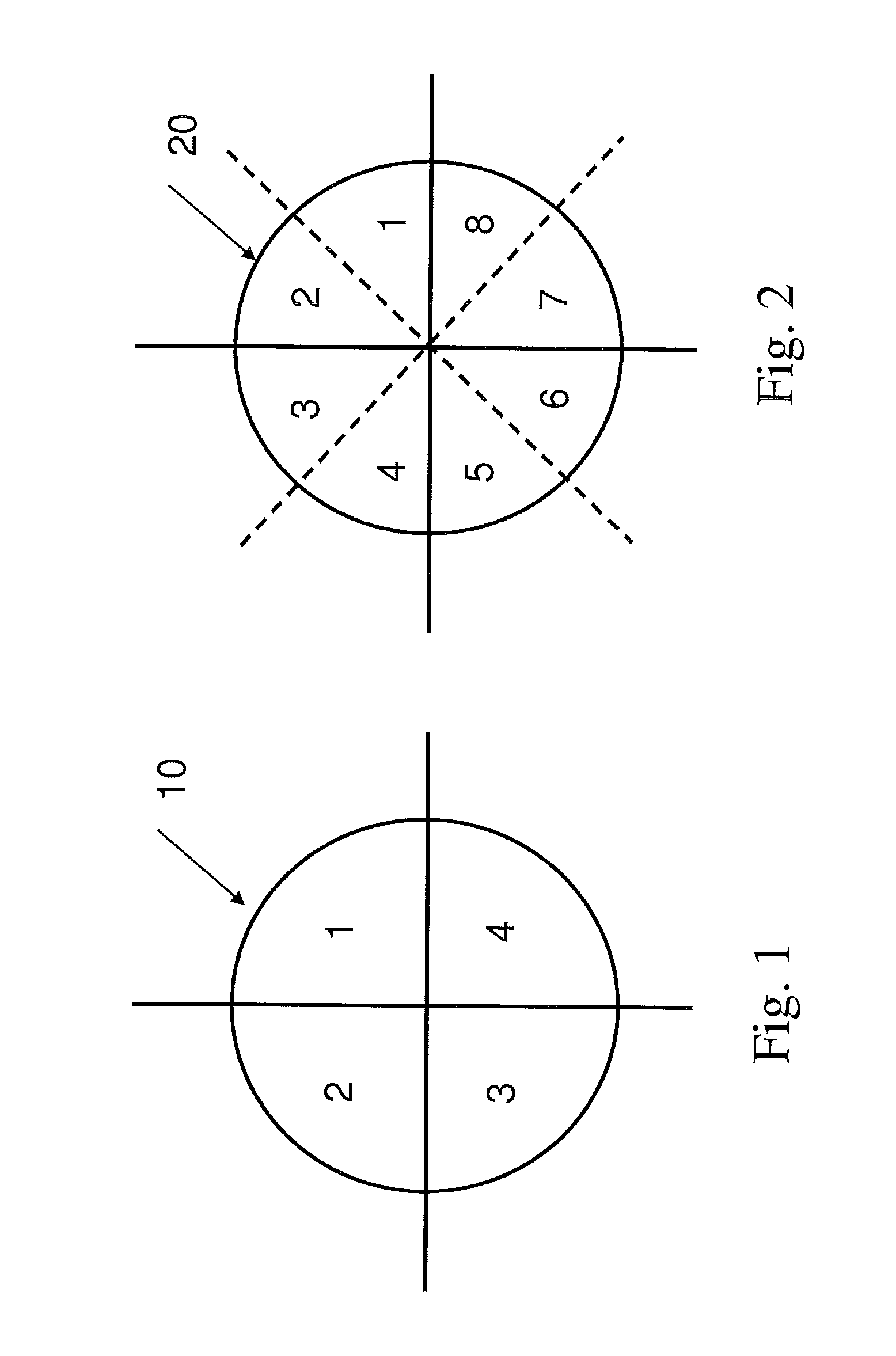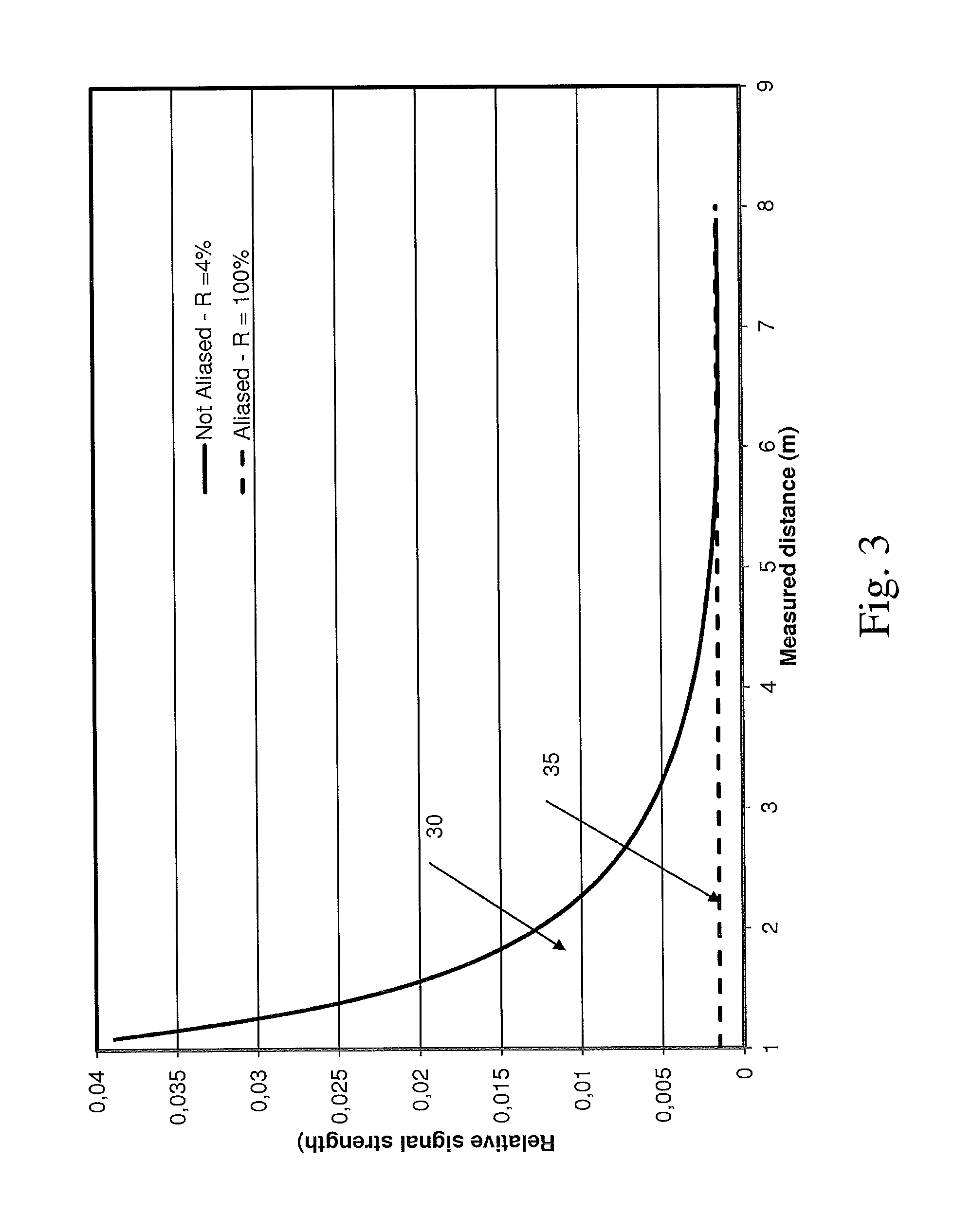Processing of time-of-flight signals
a technology of time-of-flight and time-of-flight, which is applied in the field of processing of time-of-flight (tof) signals, can solve the problems of affecting tof systems, distances to be erroneously determined, and major drawbacks of conventional tof camera systems
- Summary
- Abstract
- Description
- Claims
- Application Information
AI Technical Summary
Benefits of technology
Problems solved by technology
Method used
Image
Examples
first embodiment
[0119]In accordance with the present invention, one extra measurement is made at a lower second frequency with the standard TOF technique described above. This measurement can, for example, be taken at a second frequency HALF, that is, half the first or BF. In that case, the system is able to discern k is even from k is odd, using the following relationships:
If QHALF>0→TOF measurement with k is even
If QHALF<0→TOF measurement with k is odd
[0120]Thus, only checking the sign of one measurement allows to reduce possible values for k to be either odd or even. Thus the unambiguous distance is increased a factor of 2, thereby reducing the reflectivity limit a factor of 4.
[0121]However, due to noise in this measurement, for example, when QHALF is very close to 0, the measurement can mistakenly be interpreted wrongly.
[0122]Alternatively, the IHALF measurements can also be used using the same relationships as above with the same issues of noise in the measurement.
[0123]To improve this, one co...
second embodiment
[0151]It has been found, however, that when increasing the modulation frequency which is beneficial for the performance of the TOF camera system, extending the maximum range of the system by four times may not be adequate. If a first frequency BF of 100 MHz is used having a natural non-ambiguity or unambiguous distance of 1.5 m, using second frequencies that are QUARTER frequencies as described with reference to the invention above, the non-ambiguity or unambiguous distance is now 6 m. If, however, due to the size of the region in which the TOF camera system is to operate limiting distance measurements to 3 m, the reflectivity limit becomes in first order 25% which makes distance determination for objects of lower reflectivity very difficult. Moreover, for systems where de-aliasing at a distance greater that 6 m is required, second frequencies that are QUARTER frequencies are therefore not sufficient.
[0152]As described above, second frequencies that are EIGHTH frequencies can be use...
PUM
 Login to View More
Login to View More Abstract
Description
Claims
Application Information
 Login to View More
Login to View More - R&D
- Intellectual Property
- Life Sciences
- Materials
- Tech Scout
- Unparalleled Data Quality
- Higher Quality Content
- 60% Fewer Hallucinations
Browse by: Latest US Patents, China's latest patents, Technical Efficacy Thesaurus, Application Domain, Technology Topic, Popular Technical Reports.
© 2025 PatSnap. All rights reserved.Legal|Privacy policy|Modern Slavery Act Transparency Statement|Sitemap|About US| Contact US: help@patsnap.com



